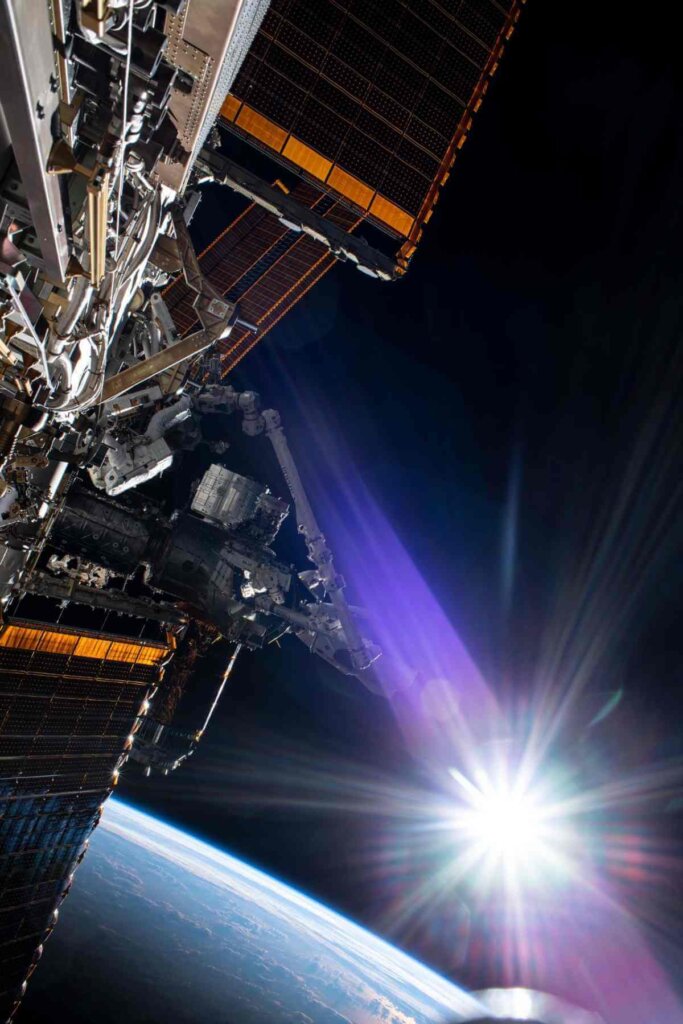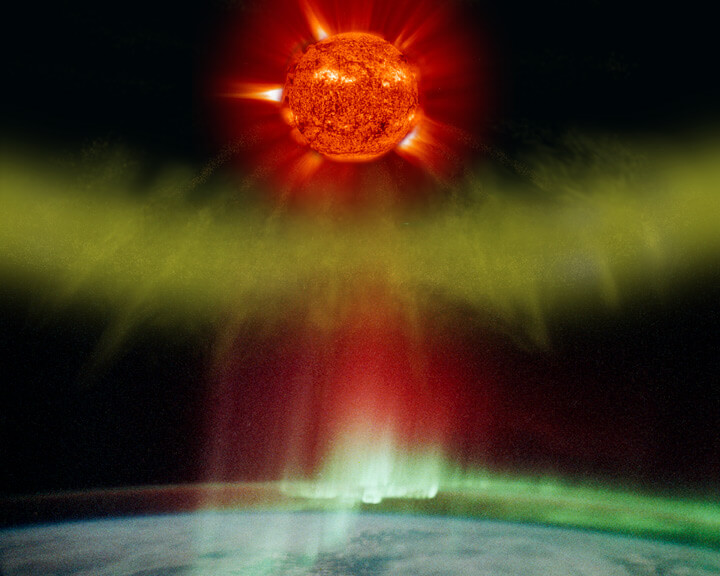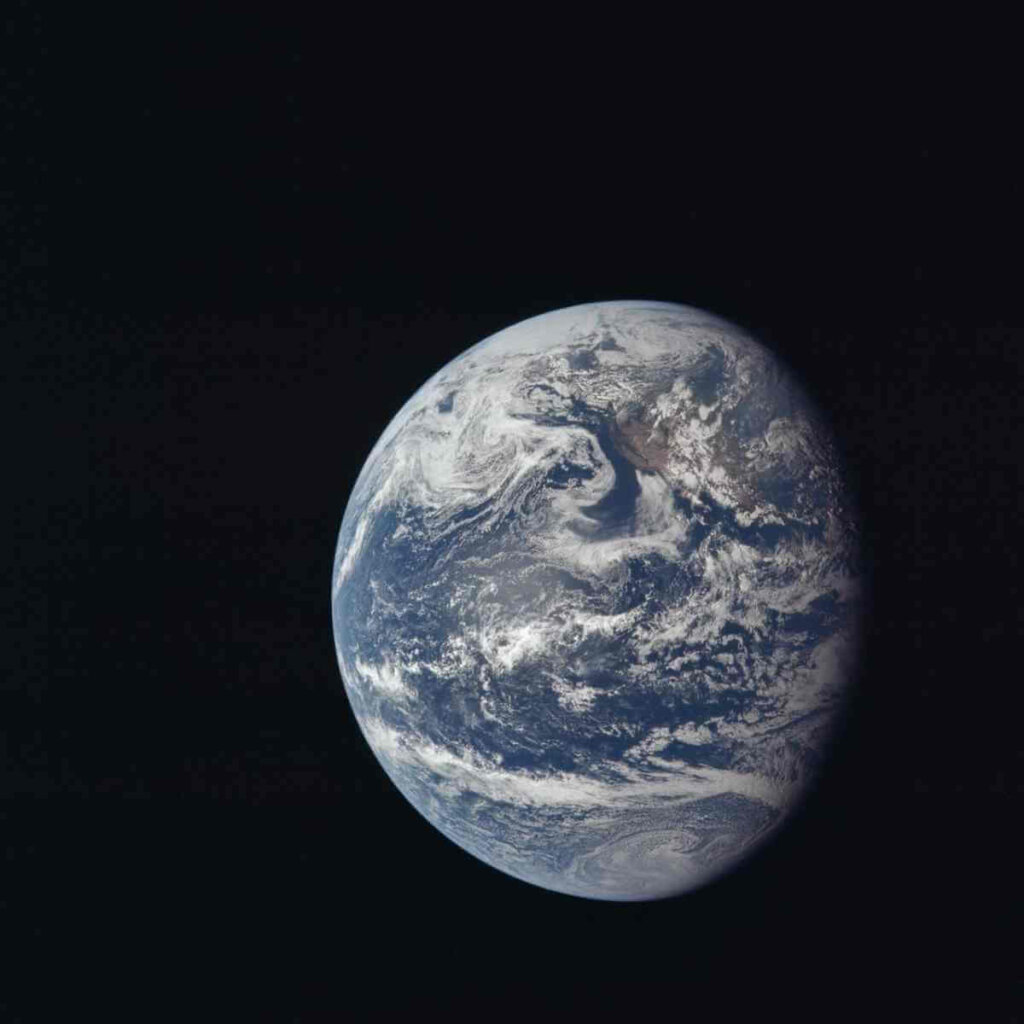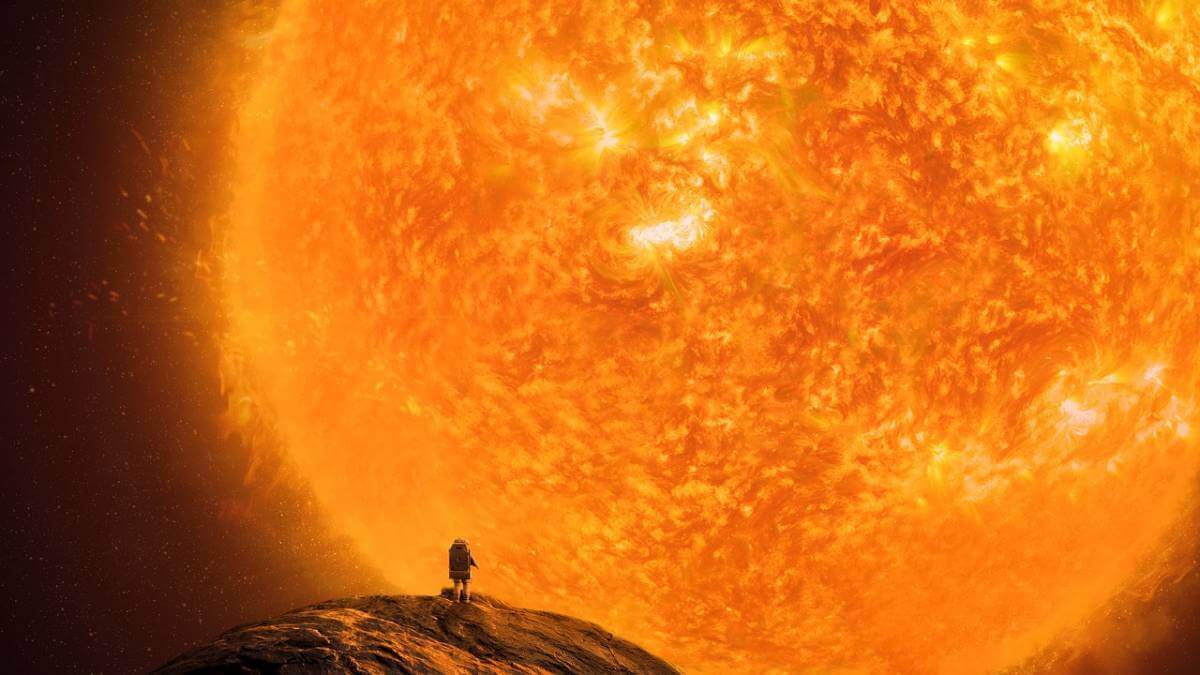In short, yes, astronauts can most definitely see the sun while in space! Whether they are orbiting around the Earth, taking a trip to the Moon, or going on an expedition to the International Space Station (ISS), the great big ball of gas that keeps our planet in orbit is visible beyond the Earth. Astronauts are even able to witness a kind of “sunrise” as they orbit around the Earth, seeing the sun rise and set as many as 16 times when aboard the ISS.
We Earthlings commonly describe the sun as being orange or yellow, even red sometimes, when we see it against the backdrop of our blue sky. However, the sun projects every possible color at the same time, which our eyes will perceive as being white – and that is exactly how the sun looks to astronauts in space.
Why Does The Sun Look Different In Space Than On Earth?
Rainbows are the sun’s light separated into its colors, and the order of the colors in the rainbow is important to understand why the sun appears white in space. All light has what is called a wavelength, which is just the distance between two peaks, or crests, of the waves that light particles travel as. The beginning color of the rainbow, red, has the longest wavelength, and the ending color, blue, has the shortest wavelength.
The sun, as seen from Earth, will appear red, yellow, or orange during a sunrise or sunset because the longer wavelengths are harder to scatter or divert from our eyes. The thickness of Earth’s atmosphere will scatter the shorter blue, violet, and green wavelengths, much like how big rocks on the shore will disperse smaller waves. Therefore, only the longer wavelengths will reach our eyes and the sun appears in these warmer-toned colors.

In space, there is no atmosphere, so the astronauts don’t have anything to scatter the sun’s light in any way before it reaches their eyes. They see the long wavelengths and the short wavelengths. In other words, they see every color of the rainbow at the same time, and our eyes only know how to process that as being the color white.
Is The Sun More Harmful To Astronauts In Space?
On Earth, we worry about getting too many ultraviolet (UV) rays from sun exposure. Luckily, Earth’s atmosphere contains a level of ozone that protects us from most of the harmful rays emitted from the sun. Without this layer of protection, astronauts are at a higher risk of being exposed to too many UV rays from the sun while they are in space.
However, UV rays are the least of their worries. Space radiation poses a serious danger to astronauts and cosmonauts that live and work in space. Solar storms happen frequently, which include when the sun experiences a large explosion in its atmosphere, emitting a solar flare. On Earth, this usually causes an increase in Earth’s northern and southern lights (auroras), though these solar flares can damage satellites, power grids, and communication systems.

For astronauts, the highly energetic particles emitted from solar storms can enter a person’s body, causing cancer, heart problems, and cataracts. These particles can also break down tissue in the human nervous system and even damage DNA inside the cells. A different type of space radiation, called galactic cosmic rays, comes from the explosions of stars from the Milky Way as well as other nearby galaxies. This type of space radiation is much more dangerous to spacecraft and astronauts than any solar radiation.
Can Other Stars Be Seen From Space?
Even though we see billions of shining stars littering the night sky when we look up from our planet, pictures of the astronauts on the Moon or on a spacewalk mission aboard the ISS show no stars in space. Why is this? Mostly, it has to do with the camera settings being used. If an astronaut were to take a picture of the sky out the window of their spacecraft, he would need to increase the exposure of his camera for the more distant light to get through the lens.
However, astronauts can clearly see stars from space with their own eyes. While orbiting around the Earth on the ISS, they get to experience nighttime 16 times a day, and just like us, they can see the stars during this time. If the sun is in view, it will overtake the light of the distant stars and the depths of space will appear to be a wall of pitch black, like we see in the Apollo 11 photos.

It is fairly common for astronauts to take photos of the sights they see while traveling in space. NASA astronaut Donald Pettit, who has experienced three space missions and more than a year aboard the ISS, uses photos he took as a big part of telling his stories.
“To travel in space is to be awestruck, over and over and over,” Pettit explains in his book, “Spaceborne,” a compilation of his best photos, some being taken by his crewmates. Over his three missions in space, he said, they took about 600,000 photos, including stars streaking across the horizon, the Earth’s Auroras, and the bright golden lights of Earth’s city grids at night.
Can The Planets Be Seen From Space?
Depending on the time of year and the phase of the Moon, certain planets can be seen with the human eye from the ground without the help of binoculars or telescopes. The easiest planets to distinguish in the night sky are Venus, Saturn, and Jupiter, mostly because Venus is our closest neighboring planet, and Saturn and Jupiter’s greater size gives more surface area for the sun’s light to reflect off of.
When we look at these planets from Earth, they are hard to distinguish from stars in the sky; one way to tell the difference is the fact that the light from a planet doesn’t “twinkle“. When an astronaut looks for a planet while they are in space, they will see a very similar sight to what we see on Earth.
So, yes, planets can most definitely be seen by astronauts from space! They can be photographed with the right camera settings and precision, as well as observed in the deep sky from the ISS as the astronauts orbit the Earth. The only difference is astronauts don’t have to wait for a certain time of year to see Venus pop up in the sky.
Conclusion
There are many things that we can observe when we look up into the sky, whether it’s day or night. The sun, our very own star, keeps our planet in orbit, provides warmth, and rises to greet us every morning. For astronauts, the sun is still there to provide warmth and greetings more than once a day during their space missions. Even though it’s not the same bright yellowish color that we are used to, the giant white ball of gas is hard to miss, even from space.
Although, astronauts need to be a bit more careful while in space when they are exposed to the sun’s rays outside their spaceships. In the vacuum of space, astronauts rely on their special suits and the comfort of the enclosed space crafts to keep them safe from the sun’s solar flares and the far-traveled cosmic radiation.
Astronauts have the luxury of getting the best seat in the house when viewing deep sky stars, galaxies, and even the band of the Milky Way, documenting their travels with thousands of pictures and videos. They can even see and photograph the planets in the sky, just like we can!

